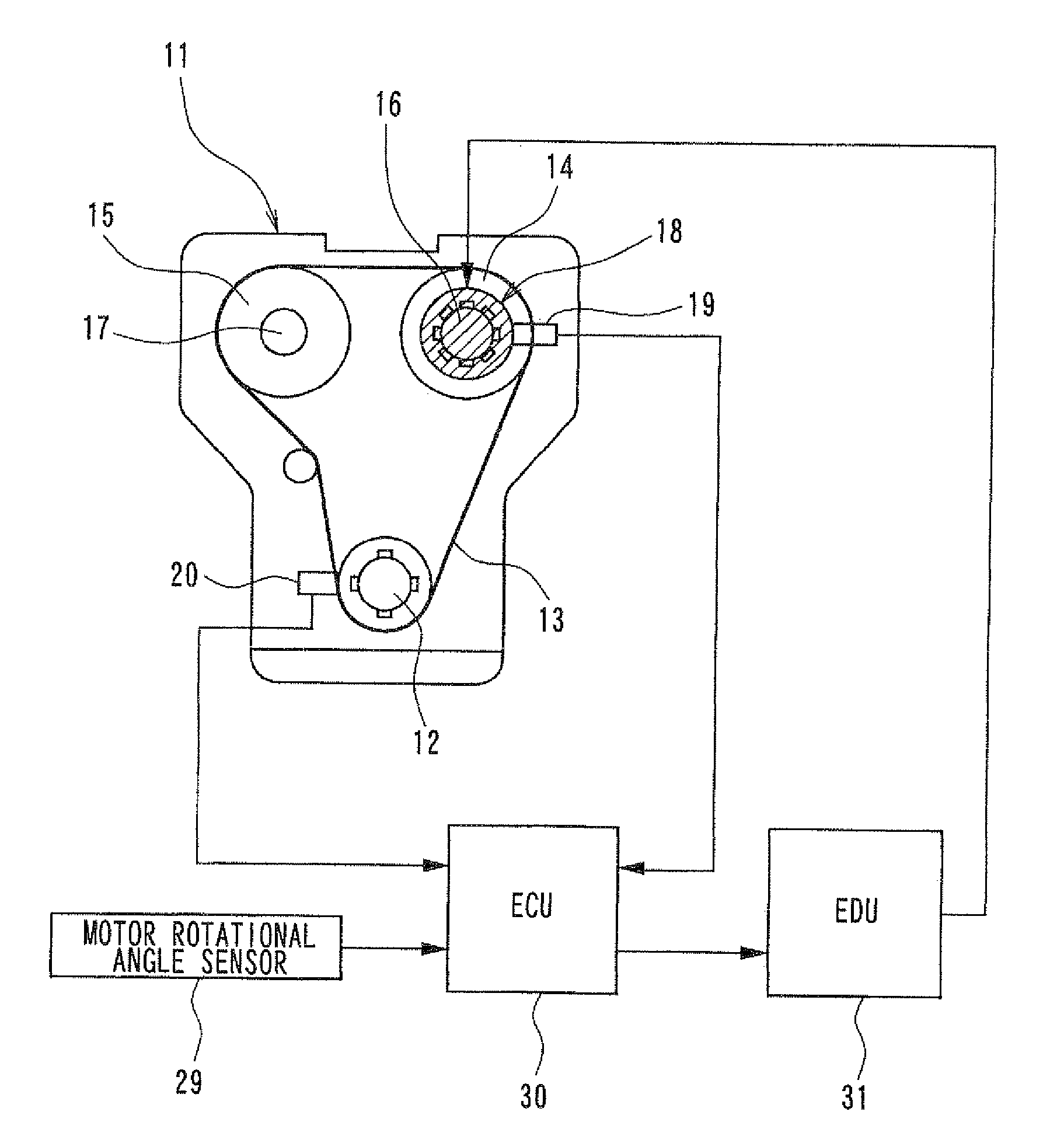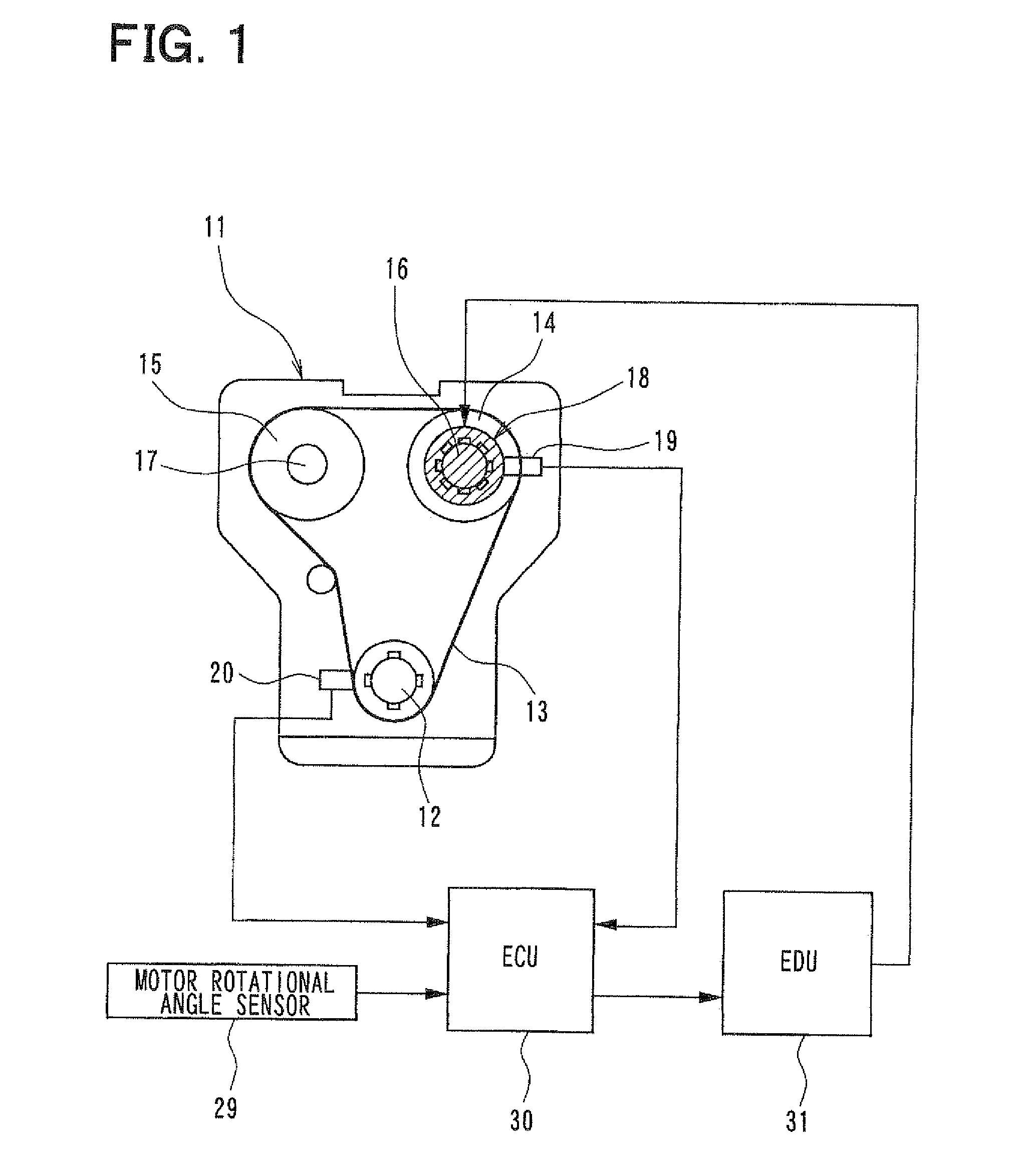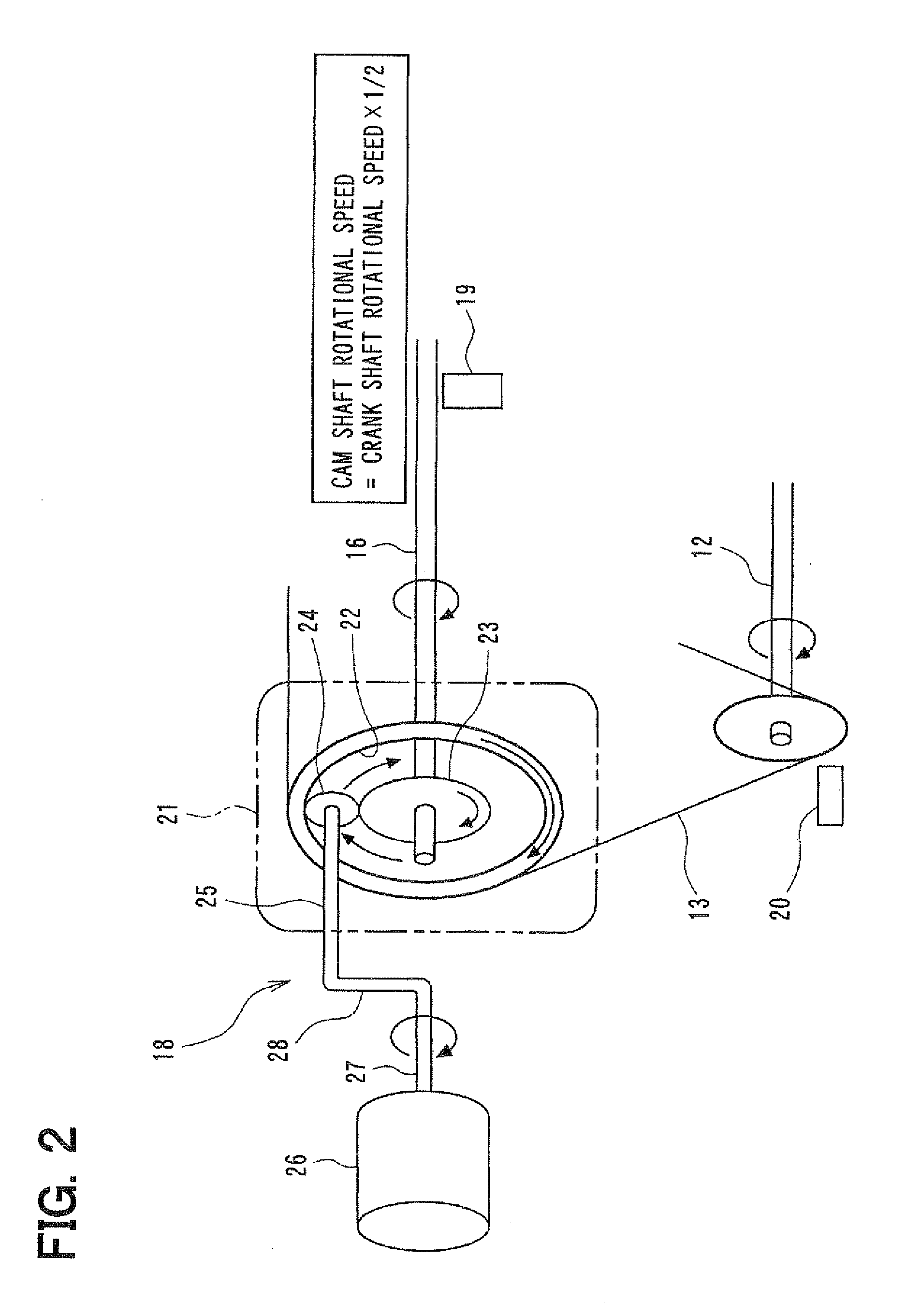Control system for variable valve timing apparatus
- Summary
- Abstract
- Description
- Claims
- Application Information
AI Technical Summary
Benefits of technology
Problems solved by technology
Method used
Image
Examples
first embodiment
[0032]Embodiments of the present invention will be explained with reference to the embodiments shown in the drawings, wherein the present invention is applied to a variable valve timing apparatus for an intake valve.
[0033]At first, an entire structure for a variable valve timing control system will be explained with reference to FIG. 1.
[0034]A driving power of an internal combustion engine 11 is transmitted by a timing chain (or a timing belt) 13 from a crank shaft 12 to a cam shaft 16 for an intake valve as well as to a cam shaft 17 for an exhaust valve via respective sprockets 14 and 15. A variable valve timing (VVT) apparatus 18 of an electrically-driven type is provided at the cam shaft 16 for the intake valve. A rotational phase (a cam shaft phase) of the cam shaft 16 with respect to the crank shaft 12 is changed by the variable valve timing (VVT) apparatus 18, so that a valve timing (a valve opening timing and / or a valve closing timing) for the intake valve (not shown) , which...
second embodiment
[0076]A second embodiment of the present invention may be applied to the VVT control system shown in FIGS. 1 and 2. Therefore, the second embodiment will be explained with reference to FIGS. 1, 2 and 6A to 8.
[0077]An optimum value of the valve timing at starting the engine depends on temperature of the engine 11 (temperature of engine cooling water). More exactly, the optimum value of the valve timing is shifted to an advancing side, as the temperature of the engine cooling water becomes lower. When the engine operation is stopped by turning off the ignition switch, and if the valve timing is not set at a proper value for a next engine starting operation (wherein the proper value depends on the temperature of the engine cooling water at re-starting the engine operation), it may happen that the engine operation may not be smoothly started.
[0078]According to the second embodiment, the valve timing is changed not only during the engine is operated but also when the engine operation is ...
PUM
 Login to View More
Login to View More Abstract
Description
Claims
Application Information
 Login to View More
Login to View More - R&D
- Intellectual Property
- Life Sciences
- Materials
- Tech Scout
- Unparalleled Data Quality
- Higher Quality Content
- 60% Fewer Hallucinations
Browse by: Latest US Patents, China's latest patents, Technical Efficacy Thesaurus, Application Domain, Technology Topic, Popular Technical Reports.
© 2025 PatSnap. All rights reserved.Legal|Privacy policy|Modern Slavery Act Transparency Statement|Sitemap|About US| Contact US: help@patsnap.com



